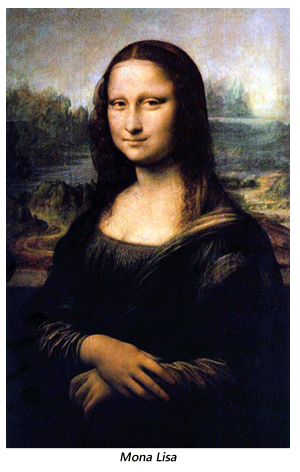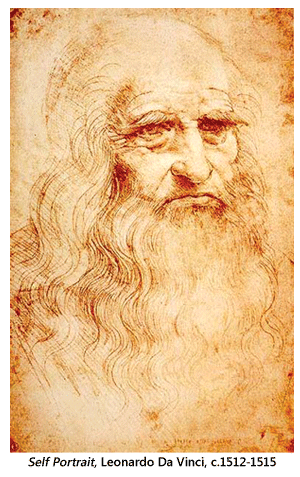- Prelude
- Editorial
- A time to Act
- Raja Ravi Varma: The painter who made the gods human
- Rabindranath as Painter
- Gaganendranath: Painter and Personality
- Abanindranath Tagore: a reappraisal
- Where Existentialism meets Exiledom
- Nandalal Bose
- Jamini Roy's Art in Retrospect
- Sailoz: The Inerasable Stamp
- Amrita Sher-Gil
- Calcutta's Best Kept Secret: The Marble Palace
- Art is Enigmatic
- A few tools to protect the French culture
- The exact discipline germinates the seemingly easiness
- Symbols of Monarchy, power and wealth the Turban Ornaments of the Nizams
- The Bell Telephone
- The Pride of India
- Tapas Konar Visualizing the mystic
- Theyyam
- Our Artists vs. their Artists
- Dragon boom or bubble?
- What Happened and What's Forthcoming
- Art Bengaluru
- Musings from Chennai
- Art Events Kolkata: May – June 2011
- Mumbai Art Sighting
- Previews
- In the News
ART news & views
Art is Enigmatic
Volume: 3 Issue No: 18 Month: 7 Year: 2011
Antiques
by Haimanti Dutta Ray
Enigmas can be and are of various kinds. There are scientific enigmas, ones which have and continue to puzzle scientists over centuries and which, to this day, remain unsolved. But I am talking of another kind of enigma. Poets, litterateurs, artists, music composers et al have all professed that the primal inspiration behind each of their compositions have been a single enigma - woman. All things feminine and woman-centric are, doubtless bound to be, attractive. I am not at present referring to the political scenario we all are being hurled into, in the state. Here of course we are witnessing a blatant example of woman power politics.  Without any political innuendos, let us digress and deal things in a literary context. The greatest of all Romantic poets, John Keats, had said, “A thing of beauty is a joy forever” and “Beauty is truth, truth beauty That is all / Ye know on earth, and all ye need to know.” Of course here the young poet had equated all things beautiful with truthfulness and the fact that beauty is as fragile as truth. The poet had found both beauty and truth in nature.
Without any political innuendos, let us digress and deal things in a literary context. The greatest of all Romantic poets, John Keats, had said, “A thing of beauty is a joy forever” and “Beauty is truth, truth beauty That is all / Ye know on earth, and all ye need to know.” Of course here the young poet had equated all things beautiful with truthfulness and the fact that beauty is as fragile as truth. The poet had found both beauty and truth in nature.
We normally associate beauty with femininity. Rarely do we consider a man to be beautiful or , for that matter, enigmatic. Deviating from literature and delving into the world of art, we find contradictions in this rather commonly held tenet. The sculptor virtuoso, Michelangelo, had made masculine sculptures and frescoes on Sistine Chapel in the Vatican City that are odes to the male form. Irving Stone's “The Agony and The Ecstasy” describes in detail how Michelangelo had dissected human cadavers in order to achieve perfection in his sculptures. A contemporary of Michelangelo, Leonardo di Ser Piero da Vinci was a multi-faceted genius. This Italian as we all know was a painter, sculptor, architect, musician, scientist, mathematician, engineer, inventor, anatomist, geologist, botanist and writer. Leonardo has often been described as the archetype of the Renaissance Man. He is considered to be one of the greatest painters of all time and perhaps the most diversely talented person ever to have lived.
Da Vinci had designed the helicopter. His drawing of the “Vitruvian Man” is regarded as a cultural icon, being reproduced on everything from the euro to text books to t-shirts. Dan Brown had marketed Da Vinci in his best-seller in the thriller genre quite effectively. The writer had speculated on the identities of the personages portrayed in the artist's famous “The Last Supper”. That is the magic and suspense of timeless art. The book had captivated readers of all ages who had been glued to its pages. But Leonardo's most enigmatic, controversial and popular work is, of course, the Mona Lisa. The actual painting is about 500 years old today. It is perhaps the world's most famous painting.
We, my parents and myself, had travelled to Europe almost a decade ago. We had been in London for a month and from there had taken a packaged trip to few European countries like France, Italy, Switzerland, Belgium, Luxembourg.  We went to almost all the salient places of tourist attraction. The trip had been made so long ago, but it has been etched out in my memory as if I had travelled there almost yesterday. We went to museums, galleries, rowed on the gondola and heard the Pope delivering mass at the Vatican. While in France, we were taken to the palace of Versailles and of course, the Louvre.
We went to almost all the salient places of tourist attraction. The trip had been made so long ago, but it has been etched out in my memory as if I had travelled there almost yesterday. We went to museums, galleries, rowed on the gondola and heard the Pope delivering mass at the Vatican. While in France, we were taken to the palace of Versailles and of course, the Louvre.
Walking around the Louvre, had excited me like no other museums had ever had. It had paintings and sculptures which are the riches and treasures of the world and which teach us that art transcends all barriers and is undoubtedly and cryptically, timeless. There I had discovered Leonardo's Mona Lisa. The original has been kept at the Louvre where it still resides. The painting is kept encased in bullet-proof glass case and if one goes a step too near it, it would set off alarms. What struck me was the size of the actual painting, about which speculation never seems to end. The Mona Lisa is comparatively much smaller than its other kindred counterparts. The Museum has huge paintings by Rembrandt and Eugene Delacroix.
There have been countless theories regarding the identity of the actual figure behind the artist's masterpiece. I say figure, because there have contentions that the painting is actually that of a man, more importantly that of Leonardo himself. That is, it is a kind of self-portrait, since there is likeness between the painting under scrutiny and the artist's own sketch of his own self. There has been tomes written about the enigmatic smile depicted in the painting. No other painting in the world, I believe, has triggered off so much of speculations. Recently an excavation had been made where the grave of the lady believed to be the main inspiration behind the Mona Lisa has been excavated. Whether there was really a life and blood person behind this iconic work, is of course open to debate.
Da Vinci had the mark of a genius in him. Art is timeless and one of the best chronicles of social history. What struck me at the Louvre was the way these masterpieces were preserved and kept under watchful eyes. Can we ever dream of one museum in our country which will be able to boast of its riches and the kind of security offered to our western counterparts? The NGMA in the capital is our best bet, but that too is under internal problems and doles out national treasures from time to time, as recent surveys and researches reveal. Our country can boast of specimens of art which has withstood the test of time but which need immediate attention by way of proper restoration.